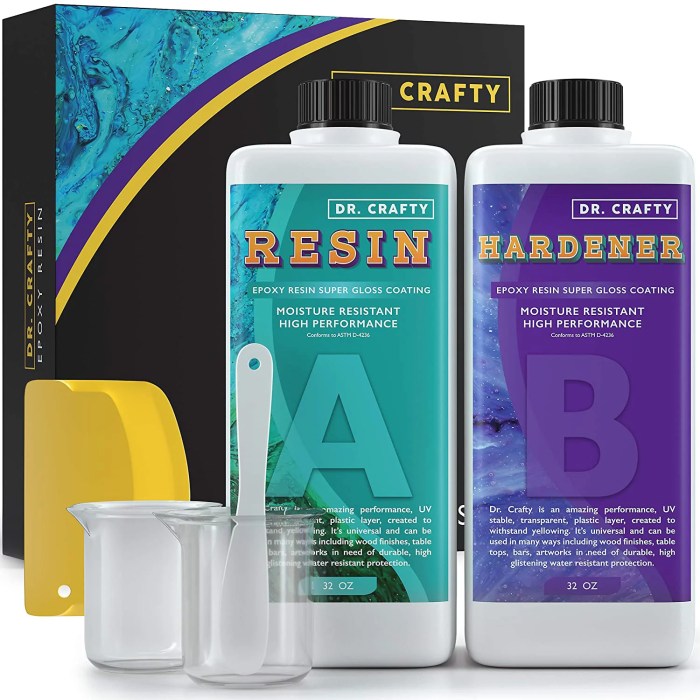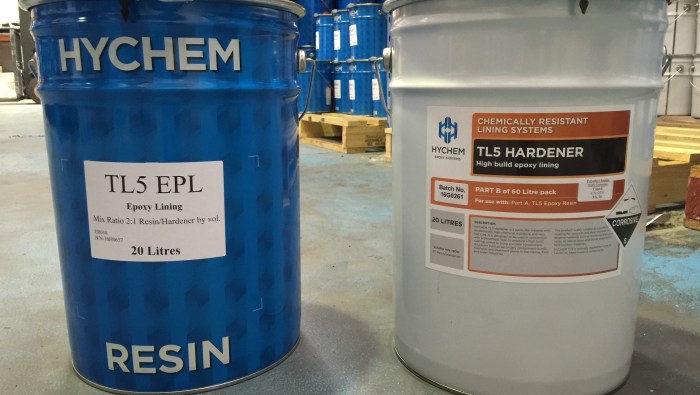Two-part epoxy resins must be heated in order to harden, initiating a chemical reaction that transforms them from a liquid to a solid state. This process, known as curing, is crucial for achieving the desired properties and performance of epoxy resins in various applications.
Understanding the role of heat in curing is essential for successful implementation of epoxy resins. This guide delves into the mechanisms involved, explores different curing methods, and provides practical considerations for achieving optimal results.
Two-Part Epoxy Resins Overview: Two-part Epoxy Resins Must Be Heated In Order To Harden

Two-part epoxy resins are a type of thermosetting polymer composed of two main components: an epoxy resin and a hardener. The epoxy resin contains epoxide groups, while the hardener contains amine or anhydride groups. When the two components are mixed, they undergo a chemical reaction known as curing, resulting in the formation of a cross-linked polymer network.
Epoxy resins possess excellent mechanical properties, including high strength, rigidity, and toughness. They also exhibit good adhesion to a wide range of substrates, making them versatile materials for various applications.
The Role of Heat in Curing
Heat plays a crucial role in the curing process of two-part epoxy resins. The application of heat accelerates the chemical reaction between the epoxy resin and the hardener, promoting the formation of cross-links between the polymer chains.
The optimal curing temperature and duration vary depending on the specific epoxy resin system used. Generally, higher temperatures lead to faster curing rates, but excessive heat can result in premature gelation or degradation of the resin.
Curing Methods
Two-part epoxy resins can be cured using various methods, including:
| Curing Method | Temperature | Duration | Equipment |
|---|---|---|---|
| Room Temperature Curing | 20-25°C | 24-48 hours | No special equipment required |
| Elevated Temperature Curing | 50-100°C | 1-6 hours | Oven or heat lamp |
| Hot Melt Curing | 100-150°C | Minutes to hours | Hot melt applicator or heated press |
Factors Affecting Curing Time, Two-part epoxy resins must be heated in order to harden
Several factors can influence the curing time of epoxy resins, including:
- Temperature: Higher temperatures generally lead to faster curing rates.
- Resin Thickness: Thicker resin layers require longer curing times.
- Presence of Fillers or Additives: Fillers and additives can affect the curing rate and properties of the epoxy resin.
Curing Considerations
To achieve optimal curing results, it is essential to consider the following tips:
- Proper Mixing: Ensure thorough mixing of the epoxy resin and hardener to achieve a homogeneous mixture.
- Degassing: Remove air bubbles from the mixture before curing to prevent voids in the cured resin.
- Post-Curing: Allow the cured resin to undergo additional curing at a slightly elevated temperature to improve its mechanical properties.
Applications
Two-part epoxy resins find widespread applications in various industries, including:
- Manufacturing: Adhesive bonding, potting and encapsulation, tooling and molding
- Construction: Flooring, coatings, sealants, and adhesives
- Electronics: Printed circuit boards, capacitors, and insulators
Q&A
Why is heat necessary for curing two-part epoxy resins?
Heat provides the energy required for the chemical reaction that cross-links epoxy molecules, leading to the formation of a rigid and durable solid structure.
What factors affect the curing time of epoxy resins?
Temperature, resin thickness, and the presence of fillers or additives can influence the rate of curing.
What are some tips for achieving optimal curing results?
Proper mixing, degassing to remove air bubbles, and post-curing at elevated temperatures can enhance the strength and durability of cured epoxy resins.


